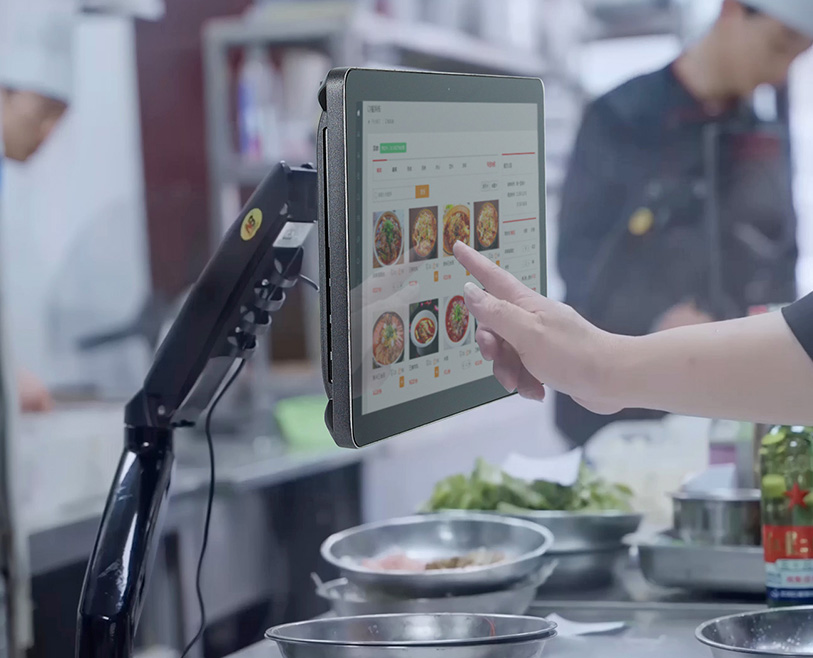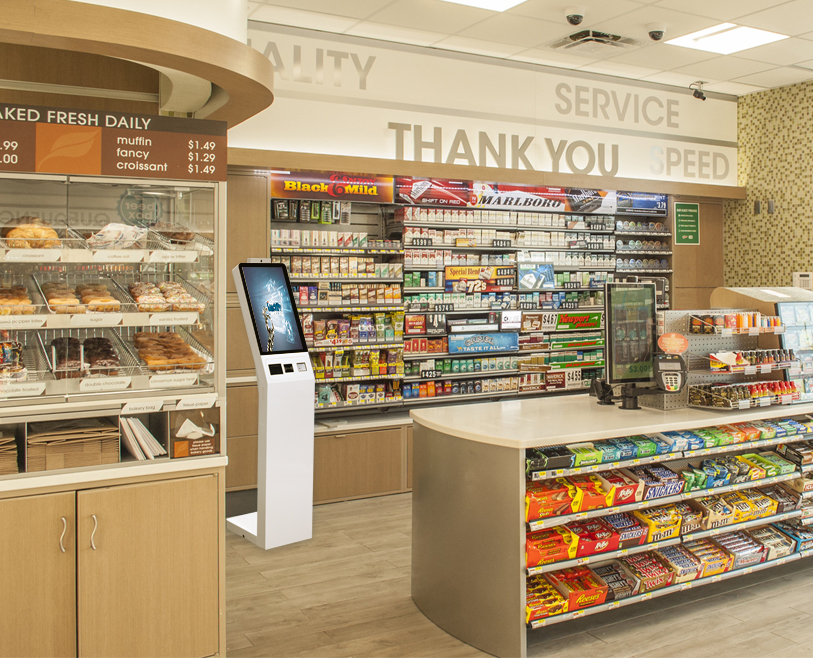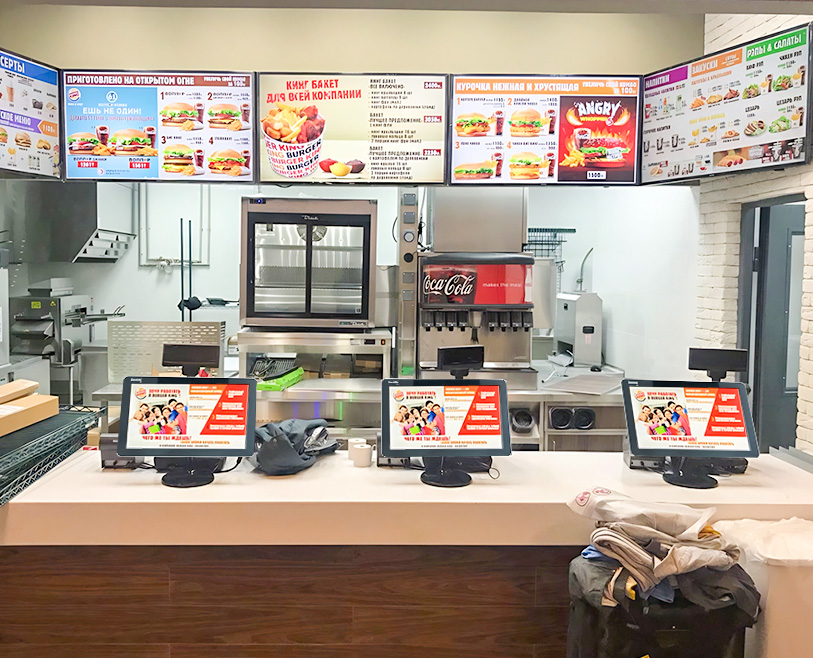In der heutigen schnelllebigen Einzelhandelslandschaft, in der dynamische Preise gelten, Käuferengagement, und betriebliche Effizienz sind entscheidend für die Wettbewerbsfähigkeit –Touchscreen für digitale Preisschilder haben sich als transformative Lösung herausgestellt. Im Gegensatz zu statischen Papierpreisschildern, die manuelle Aktualisierungen erfordern (und führen oft zu Fehlern) oder einfache digitale Tags mit eingeschränkter Funktionalität, Diese speziellen berührungsempfindlichen Tags vereinen den Komfort digitaler Preisgestaltung mit intuitiver Interaktion. Für Einzelhändler, Sie eliminieren die Arbeitskosten von Preisänderungen und erschließen Käuferdaten; für Kunden, Sie bieten sofortigen Zugriff auf Produktdetails, Vergleiche, und Werbeaktionen. Ob im Lebensmittelhandel, Modeboutiquen, Elektronikhändler, oder Convenience-Stores, Der digitale Preis-Touchscreen schließt die Lücke zwischen physischer Regalpräsenz und digitalen Einzelhandelserlebnissen. In diesem Artikel werden ihre Kernfunktionen untersucht, Schlüsselanwendungen, und bahnbrechende Vorteile, Unterstützung von Einzelhandelsmanagern und Betriebsteams bei der Auswahl von Touchscreen-Lösungen, die die Preiseffizienz und die Kundenzufriedenheit steigern.

Kernfunktionen des Touchscreens für digitale Preisschilder in Einzelhandelsgeschäften
1. Nahtlose Preisaktualisierungen in Echtzeit & Genauigkeit
Der entscheidende Vorteil des Digital Price Touch Screen ist seine Fähigkeit, fehlerfrei zu liefern, Sofortige Preisanpassungen – entscheidend für die Flexibilität des Einzelhandels:
Cloudbasierte Remote-Updates: Einzelhändler passen Preise an, Werbeaktionen starten (z.B., „Flash-Sale: 20% Aus"), oder aktualisieren Sie Produktinformationen über ein zentrales Dashboard, Änderungen werden in Sekundenschnelle auf Touch-Tags übertragen.
Preissynchronisierung mit POS-Systemen: Passt sich automatisch an den Point-of-Sale an (Pos) Werkzeuge (z.B., Shopify, Quadrat, Lichtgeschwindigkeit) um Diskrepanzen zwischen Regaletiketten und Kassenpreisen zu beseitigen.
Massenaktualisierungsfunktion: Aktualisiert Hunderte von Tags gleichzeitig (z.B., saisonale Verkäufe, Räumungsveranstaltungen) Anstatt dass das Personal jedes Papieretikett manuell austauschen muss.
2. Intuitive Käuferinteraktion & Engagement
Entwickelt, um passives Stöbern im Regal in aktives Engagement umzuwandeln, Bei diesen Touchscreens steht die Benutzerfreundlichkeit für den Käufer im Vordergrund:
Reaktionsschnelle Berührungsreaktion (≤2ms): Gewährleistet sofortigen Zugriff auf zusätzliche Informationen, wenn Käufer darauf tippen – keine Verzögerung beim Aufrufen von Produktspezifikationen, Bewertungen, oder Verfügbarkeit.
Käuferorientierte Funktionen: Ermöglicht Kunden, durch Tippen Größentabellen anzuzeigen (Mode), Zutatenlisten (Lebensmittelgeschäft), Garantiedetails (Elektronik), oder verwandte Produktvorschläge (z.B., „Mit diesem Zubehör koppeln“).
Mehrsprachige Unterstützung: Sprachumschaltung mit nur einem Tastendruck (Englisch, Spanisch, Mandarin, usw.) bedient vielfältige Kundenstämme, Stärkung der Inklusion.
3. Langlebiges Design für Einzelhandelsumgebungen
Einzelhandelsflächen erfordern eine Ausrüstung, die einer ständigen Beanspruchung standhält, verschüttet, und Verschleiß – und diese Touch-Tags liefern es:
Gehärtetes Glas in handelsüblicher Qualität: 2Über mm dickes, kratzfestes Glas hält den Wasserhähnen von Käufern stand, Wagenstöße, und kleinere Verschüttungen (z.B., Limonade in den Regalen der Lebensmittelgeschäfte).
Geringer Stromverbrauch, langlebige Displays: Verwendet E-Ink- oder LCD-Technologie mit einer Akkulaufzeit von 6–12 Monaten (für kabellose Modelle) oder kabelgebundene Stromversorgungsoptionen, Reduzierung des Wartungsaufwands.
Umweltverträglichkeit: IP54-zertifizierte Gehäuse blockieren Staub und Spritzer, Geeignet für Kühlbereiche (Lebensmittelgeschäft) oder stark beanspruchte Modeböden.
4. Käufer & Bestandsdatenerfassung
Über die Preisgestaltung hinaus, Diese Touchscreens ermöglichen durch Interaktionsverfolgung wertvolle Einblicke in den Einzelhandel:
Engagement-Analyse: Protokolliert, auf welche Produktdetails Käufer am häufigsten zugreifen (z.B., „60 % aller Berührungen von Laptops zeigen die Akkulaufzeit an“), Identifizierung hochinteressanter Merkmale.
Daten zum Käuferverhalten: Anonymisierte Daten zur Klopfhäufigkeit, Verweilzeit, und Werbeinteraktionen tragen zur Optimierung der Regalplatzierung und des Marketings bei.
Integration auf Lagerebene: Zeigt „Auf Lager“ an,„Geringer Lagerbestand,“ oder „Online verfügbar“, wenn Käufer darauf tippen, mit Echtzeitsynchronisierung mit Bestandsverwaltungssystemen.
5. Nahtlose Integration mit Einzelhandelsökosystemen
Die Interoperabilität mit vorhandenen Einzelhandelstools gewährleistet eine reibungslose Einführung:
Omnichannel-Integration: Links zu E-Commerce-Plattformen (z.B., Amazonas, Shopify) damit Käufer durch Antippen Artikel auf Wunschlisten speichern oder die Online-Verfügbarkeit prüfen können.
Integration des Treueprogramms: Ermöglicht Kunden, Treuekarten über das Touch-Tag zu scannen, um auf personalisierte Preise zuzugreifen (z.B., „Treuemitglied: $10 Aus") oder Punkte sammeln.
Peripheriekompatibilität: Stellt eine Verbindung zum Speicher-WLAN her, Bluetooth-Beacons (für gezielte Werbeaktionen), und mobile Geräte des Personals (für eine sofortige Problemmeldung).
Hauptanwendungen des digitalen Preisschild-Touchscreens in Einzelhandelsgeschäften
1. Lebensmittelgeschäft & Einzelhandel mit frischen Lebensmitteln
In Lebensmittelgeschäften – wo sich die Preise häufig ändern (z.B., produzieren, Fleisch) und Transparenz ist wichtig – diese Touch-Tags zeichnen sich aus:
Dynamische Preisgestaltung für verderbliche Waren: Passt die Preise für Artikel mit baldigem Ablaufdatum automatisch an (z.B., „Nur heute: $3.99 für abgelaufene Milch“) Abfall zu reduzieren.
Frische & Herkunftsangaben: Käufer tippen, um die Erntetermine anzuzeigen (produzieren), bäuerliche Herkunft (lokale Waren), oder Allergeninformationen (Backwaren).
Digitale Coupon-Integration: Ermöglicht es Kunden, digitale Gutscheine durch Tippen direkt auf ihr Treuekonto einzulösen, steigende Rückzahlungsquoten.
2. Mode & Bekleidungseinzelhandel
Für Modehändler, die sich auf Größe konzentrieren, Stil, und Personalisierung, Diese Touchscreens verbessern das Erlebnis in der Umkleidekabine:
Größe & Verfügbarkeitsprüfungen: Käufer tippen, um zu sehen, ob eine Jacke in ihrer Größe vorrätig ist (oder andere Farben) standortübergreifend oder online.
Styling-Vorschläge: Zeigt ergänzende Artikel an (z.B., „Tippen Sie hier, um passende Schals anzuzeigen“) wenn Käufer mit Kleidungsetiketten interagieren.
Soziales Teilen: Ermöglicht Kunden, durch Tippen etwas zu teilen Produkt Bilder in sozialen Medien (z.B., „Markieren Sie uns in Ihrem Look“) um organisches Marketing voranzutreiben.
3. Elektronik & Tech-Einzelhandel
In Elektronikgeschäften, wo die Produktkomplexität detaillierte Informationen erfordert, vereinfachen diese Touch-Tags die Entscheidungsfindung:
Technische Daten & Demos: Käufer tippen, um die technischen Daten anzuzeigen (z.B., „Akkulaufzeit: 12 Std") oder schauen Sie sich kurze Produktdemos an (z.B., „So verwenden Sie diese Kamera“).
Garantie & Support-Zugang: Mit einem Fingertipp werden die Garantiedetails angezeigt, Servicemöglichkeiten, oder Links zum Kundensupport, damit Sie nach dem Kauf beruhigt sein können.
Preisanpassung: Zeigt automatisch Preisgarantien an (z.B., „Wir passen Online-Preise an“) um die Käufer zu beruhigen und das Feilschen zu reduzieren.
4. Bequemlichkeit & Drogerieeinzelhandel
Für stark frequentierte Convenience- und Drogeriemärkte, Diese Touch-Tags optimieren Geschwindigkeit und Werbeaktionen:
Impulskaufaktionen: Zeigt die Aufforderung „In den Warenkorb“ für ergänzende Artikel an (z.B., „Tippen Sie hier, um Ihrem Einkauf Kaugummi hinzuzufügen“) in der Nähe der Kasse.
Rezept & Gesundheitsinformationen: Käufer tippen (mit Personalunterstützung) um Details zu rezeptfreien Medikamenten anzuzeigen (z.B., Dosierung, Nebenwirkungen) oder den Status der Rezeptabholung.
24/7 Preisflexibilität: Aktualisiert die Preise für Late-Night-Aktionen (z.B., „Mitternachtssnack-Angebot“) ohne dass Personal vor Ort ist, um die Etiketten zu wechseln.
Vorteile des Touchscreens für digitale Preisschilder in Einzelhandelsgeschäften
1. Reduzierte Arbeitskosten & Betriebseffizienz
Die manuelle Verwaltung von Preisschildern ist eine große Belastung für den Einzelhandel – und diese Touchscreens machen diesen Aufwand überflüssig:
Reduziert die Preisänderungsarbeit um 90%: Ein Team von 2 aktualisieren kann 500 Tags ein 10 Minuten (vs. 8+ Stunden für Papieranhänger).
Reduziert Preisfehler um 95%: Eliminiert Beschwerden über „falsche Preise“ und die Notwendigkeit, dass das Personal die Regaletiketten regelmäßig überprüfen muss.
2. Gesteigertes Käuferengagement & Umrechnungskurse
Passive Regaletiketten steigern den Umsatz nicht – interaktive Touch-Tags hingegen schon:
Käufer, die Touch-Tags verwenden, geben Geld aus 30% mehr Zeit für die Auseinandersetzung mit Produkten, die Kaufwahrscheinlichkeit erhöhen.
65% der Käufer geben an, dass sie eher ein Produkt kaufen, nachdem sie über einen Touch-Tag auf Details zugegriffen haben (z.B., Bewertungen, Spezifikationen).
3. Datengesteuerte Einzelhandelsentscheidungen
Diese Touchscreens verwandeln Regalinteraktionen in umsetzbare Erkenntnisse:
Engagement-Daten identifizieren die Leistungsstärksten (und leistungsschwach) Produkte, Unterstützung von Einzelhändlern bei der Optimierung von Lagerbeständen und Regalplatzierung.
Werbeanalysen zeigen, welche Rabatte zu den meisten Klicks und Verkäufen führen, Verfeinerung von Marketingstrategien für einen höheren ROI.
4. Verbesserte Omnichannel-Integration
Die Verbindung von physischem und digitalem Einzelhandel ist von entscheidender Bedeutung – und diese Touch-Tags sorgen für ein nahtloses Erlebnis:
40% der Käufer, die darauf tippen, um die Online-Verfügbarkeit zu überprüfen, kaufen den Artikel später (entweder im Geschäft oder online), Warenkorbabbrüche reduzieren.
Wunschlisten- und Social-Sharing-Funktionen verwandeln Ladenbesucher in Online-Follower und Stammkunden.
FAQs zum Touchscreen für digitale Preisschilder in Einzelhandelsgeschäften
Q1: Funktionieren die Touch-Tags in Kühl- oder Tiefkühlabteilungen??
A1: Ja. Wir bieten kältebeständige Modelle an, die für Umgebungen mit -20 °C bis 40 °C ausgelegt sind, mit isolierten Gehäusen und Batterien, die in Kühl- oder Gefrierschränken zuverlässig funktionieren.
Q2: Wie lange hält der Akku?, und wie einfach ist der Austausch?
A2: Drahtlose Modelle haben eine Akkulaufzeit von 6–12 Monaten (je nach Nutzung). Die Batterien können vom Benutzer mit einem einfachen Werkzeug ausgetauscht werden, und unser Dashboard benachrichtigt Sie, wenn Tags neue Batterien benötigen.
Q3: Können wir die Touch-Tags in unsere bestehenden Inventar- und POS-Systeme integrieren??
A3: Absolut. Sie lassen sich nahtlos mit allen führenden Einzelhandelstools synchronisieren – Shopify, Quadrat, Lichtgeschwindigkeit, SAP Retail, und mehr. Unser Team überprüft die Kompatibilität und kümmert sich um die End-to-End-Einrichtung.
Q4: Sind die Touch-Tags langlebig genug für stark frequentierte Einzelhandelsumgebungen? (z.B., geschäftige Lebensmittelgeschäfte)?
A4: Ja. Das gehärtete Glas und die Schutzart IP54 halten dem täglichen Gebrauch stand, Wagenstöße, und kleinere Verschüttungen. Wir testen Tags auf 100,000+ Wasserhähne, um eine langfristige Zuverlässigkeit zu gewährleisten.
F5: Können Käufer versehentlich den Preis oder die Einstellungen ändern, indem sie auf das Tag tippen??
A5: NEIN. Käuferinteraktionen sind auf vorab genehmigte Aktionen beschränkt (Informationen anzeigen, Speichern auf Wunschlisten). Preisaktualisierungen und Einstellungsänderungen sind über das zentrale Dashboard auf autorisierte Mitarbeiter beschränkt.
Abschluss
Touchscreens für digitale Preisschilder sind kein „nice-to-have“ mehr – sie sind ein Muss für Einzelhändler, die in einer digitalen Welt wettbewerbsfähig bleiben wollen. Durch die Zusammenführung von Preisgenauigkeit in Echtzeit, Käuferengagement, und Dateneinblicke, Diese Tags verwandeln statische Regale in dynamische, kundenorientierte Hubs. Für Einzelhändler, die keine Lust mehr auf manuelle Preisänderungen haben, Preisfehler, und verpasste Engagementmöglichkeiten, Die Investition in digitale Preisschild-Touchscreens ist ein strategischer Schritt, der die Kosten senkt, steigert den Umsatz, und stärkt die Kundentreue.
Bereit, Ihr Einzelhandelsgeschäft mit interaktiven Lösungen aufzuwerten, Effizienter digitaler Preis-Touchscreen? Füllen Sie das Formular auf unserer Website aus, um mit unseren Experten für Einzelhandelstechnologie in Kontakt zu treten. Wir beurteilen das Layout Ihres Shops, demonstrieren die Integration mit Ihren bestehenden Systemen, und unterbreiten Sie einen maßgeschneiderten Lösungsvorschlag, der Ihnen dabei hilft, eine nahtlose Lösung zu schaffen, datengesteuertes Einzelhandelserlebnis für Ihre Kunden.



